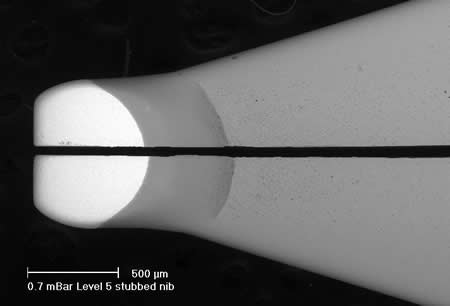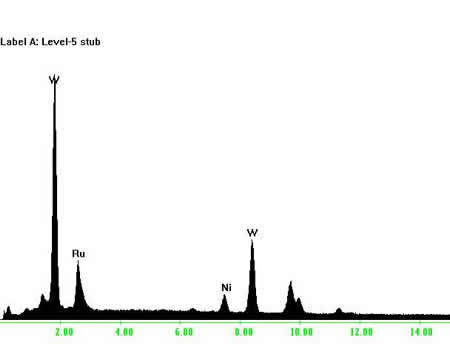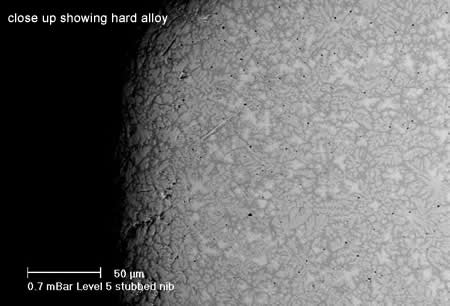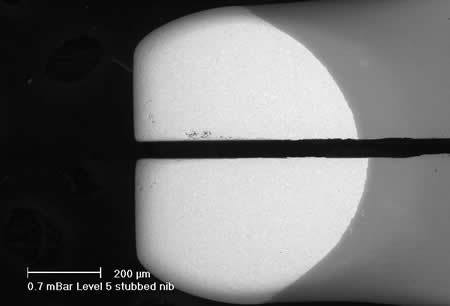
The following
article shows some SEM images of a Pelikan Level 5 nib which
was converted to a stub in Utah .
There
are some features which may be of interest.
The pictures
are "looking down at the inverted nib" images, which
show some of the shape, but not all the three-dimensional
effects.

The bright
section is the "iridium", which like most modern
pens contains no iridium, but is an interesting alloy of tungsten,
ruthenium and nickel. An x-ray spectrum is shown below..

It is
brighter as the heavier elements reflect electrons more strongly
than the lighter elements of the bulk of the nib. The dark
part of the nib is the basic stainless steel, and a spectrum
showing Cr,Fe, and Ni is below.
.

The image
above is a close-up of part of the nib, which shows the hard
alloy, which has two (or more) distinct phases, with dendritic
crystals growing in a matrix. There may be three phases, perhaps
or just two. The brighter tungsten-rich crystals are probably
harder than the darker matrix, so polishing has created some
differences in height between the softer and harder material.
This image, and some of the others show some defects in the
original material of the nib (which may not have been exposed
in the Pelikan original prior to stubbing). It also shows
a few residual shaping and polishing marks. The bottom section
of the nib does not touch the paper, only the end.

The stub
was based on an original broad nib, and is a very pleasant
"fine-stub", similar to or a bit narrower than the
Pelikan Script 1.0 stub.
|


